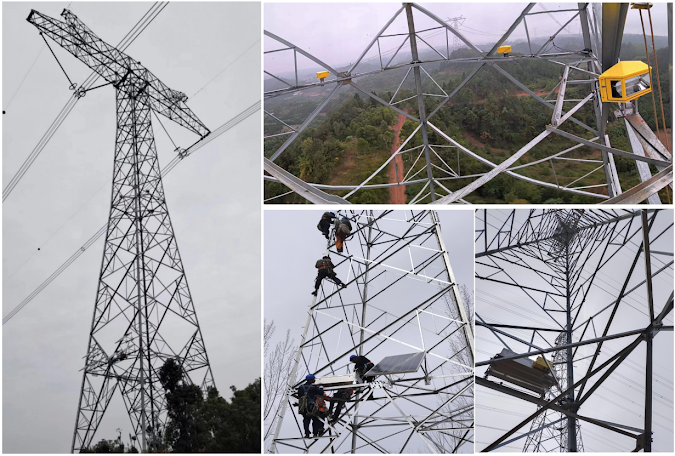Solar kits system high-intensity aircraft warning lights for transmission line used in remote locations
When it comes to transmission line projects, safety is always a top priority. One of the key safety measures for transmission towers is the use of high-intensity aircraft warning lights. These lights are critical in helping to prevent collisions between aircraft and transmission towers, especially in low-visibility conditions. In this post, we'll discuss a solar kit system that can power high-intensity aircraft warning lights for transmission line projects.
Solar kits are an ideal solution for powering high-intensity aircraft warning lights on transmission towers. They are eco-friendly, cost-effective, and require minimal maintenance. The system we'll discuss here is designed to be used in remote locations, where access to the electrical grid may not be possible. The solar kit consists of the following components:
1. Solar Panels
Solar panels are the primary component of the system. They are responsible for converting sunlight into electricity that can be used to power the warning lights. The number and size of solar panels required will depend on the number of warning lights and their power consumption.
1. Batteries
Batteries are used to store the electricity generated by the solar panels. They ensure that the system has a continuous power supply, even when there is no sunlight. Deep-cycle batteries are recommended for this application since they are designed to discharge and recharge frequently.
3. Charge Controller
The charge controller regulates the flow of electricity between the solar panels and batteries. It prevents overcharging and undercharging, which can damage the batteries and reduce their lifespan.
4. Inverter
The inverter is used to convert the DC electricity stored in the batteries into AC electricity that can be used to power the warning lights. It's important to choose an inverter that is compatible with the voltage and frequency requirements of the warning lights.
5. High-Intensity Aircraft Warning Lights
These lights are designed to be visible from long distances and are critical in ensuring the safety of aircraft flying near transmission towers. The number and placement of warning lights will depend on the specific requirements of the transmission line project.
6. Mounting Hardware and Cables
The mounting hardware and cables are used to install and connect the various components of the solar kit system. It's important to ensure that all components are securely mounted and connected to prevent damage from wind and weather.
The solar kit system should be designed to provide sufficient power to run the warning lights for the required amount of time each night. This will depend on the number of warning lights, their power consumption, and the amount of sunlight available each day. It's important to calculate the power requirements carefully to ensure that the system is reliable and effective.
In conclusion, a solar kit system is an excellent solution for powering high-intensity aircraft warning lights on transmission towers. It's eco-friendly, cost-effective, and requires minimal maintenance. By carefully selecting the components and designing the system to meet the specific requirements of the transmission line project, you can ensure the safety of aircraft flying near transmission towers, even in low-visibility conditions.
Solution Support :
emma@chendongtech.com
Phone/what'sapp: +86 13342512879



Comments